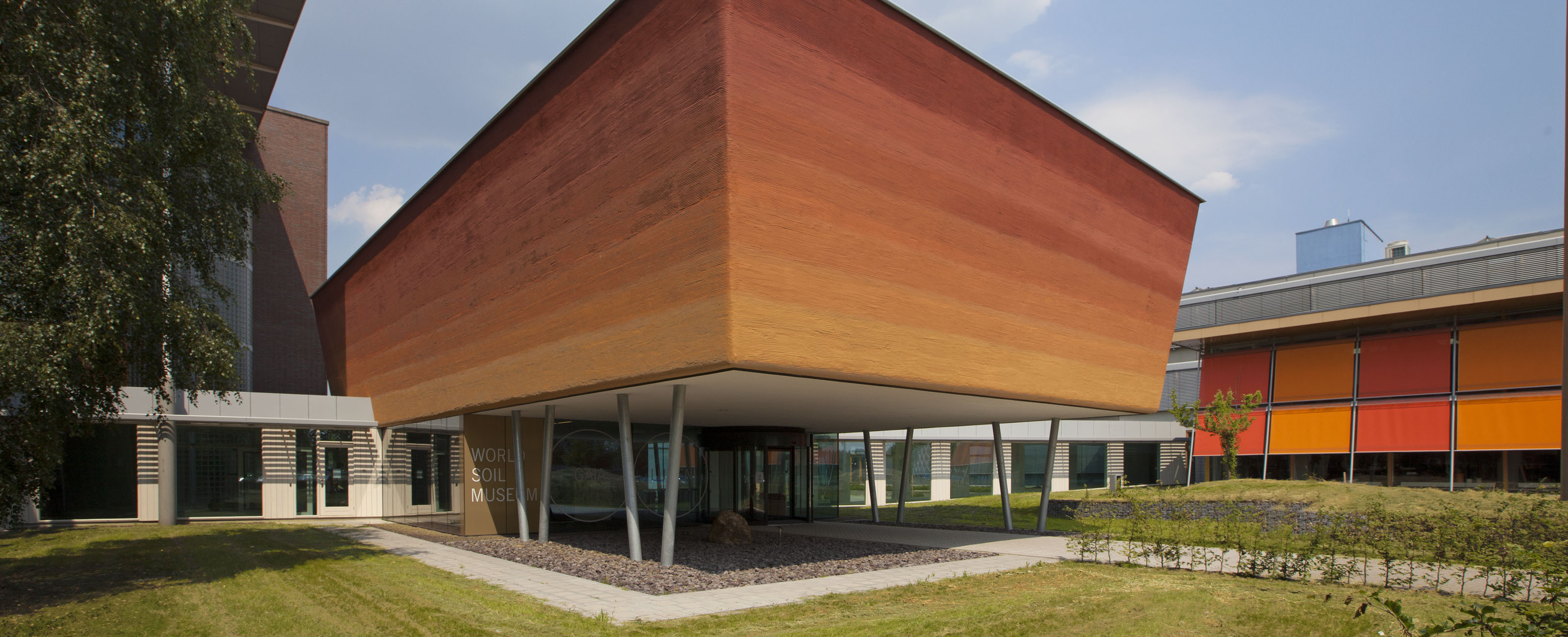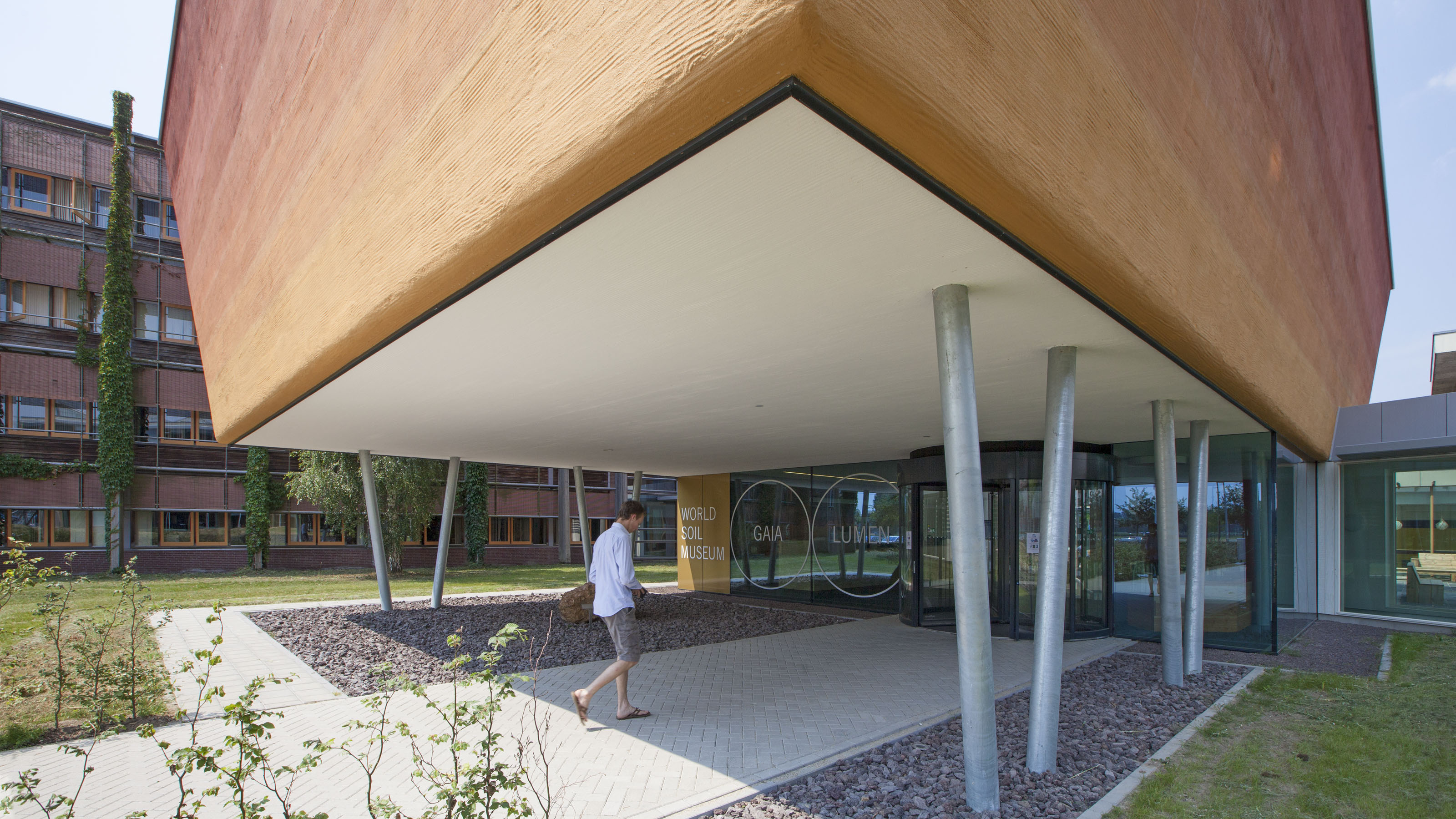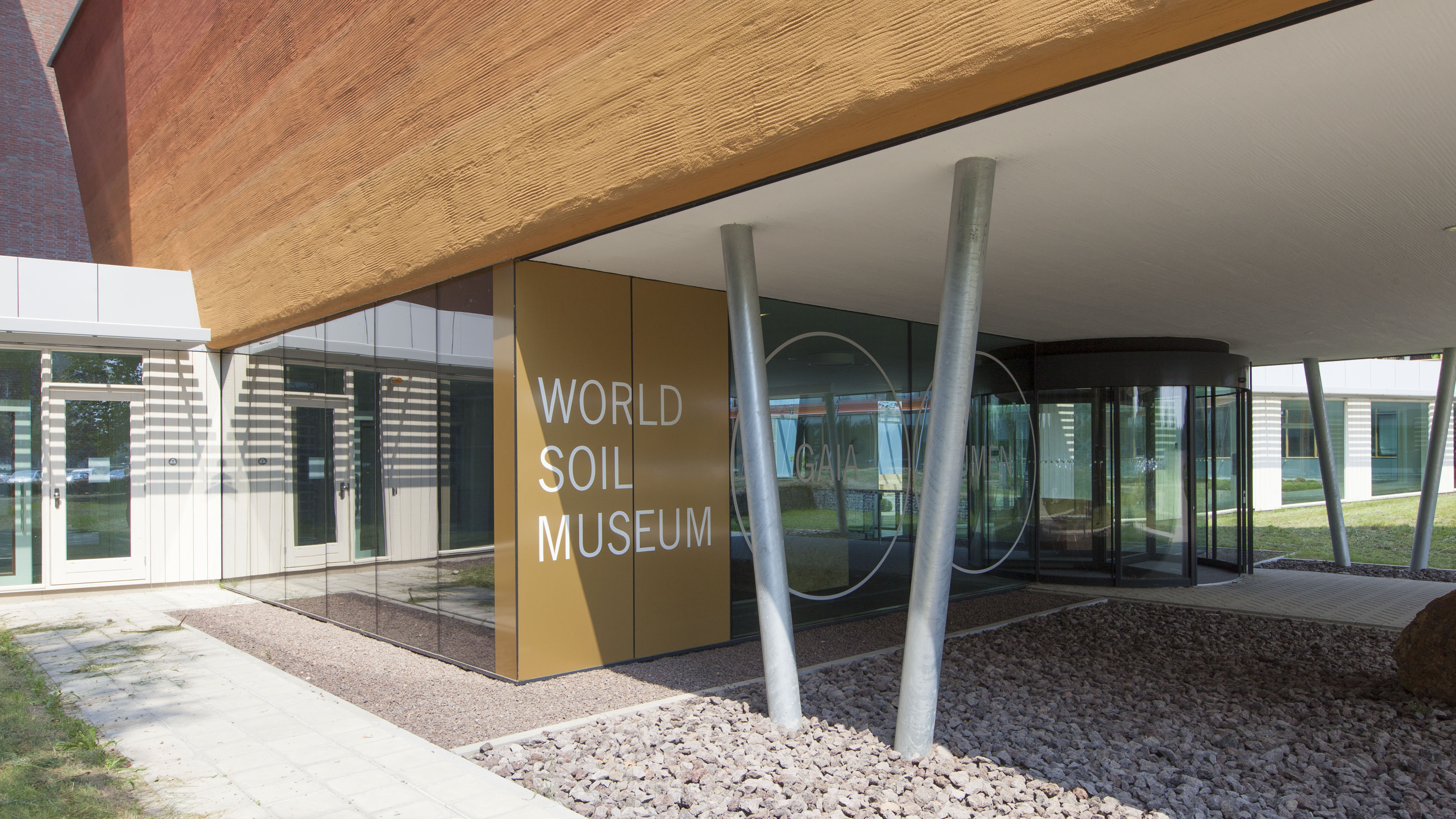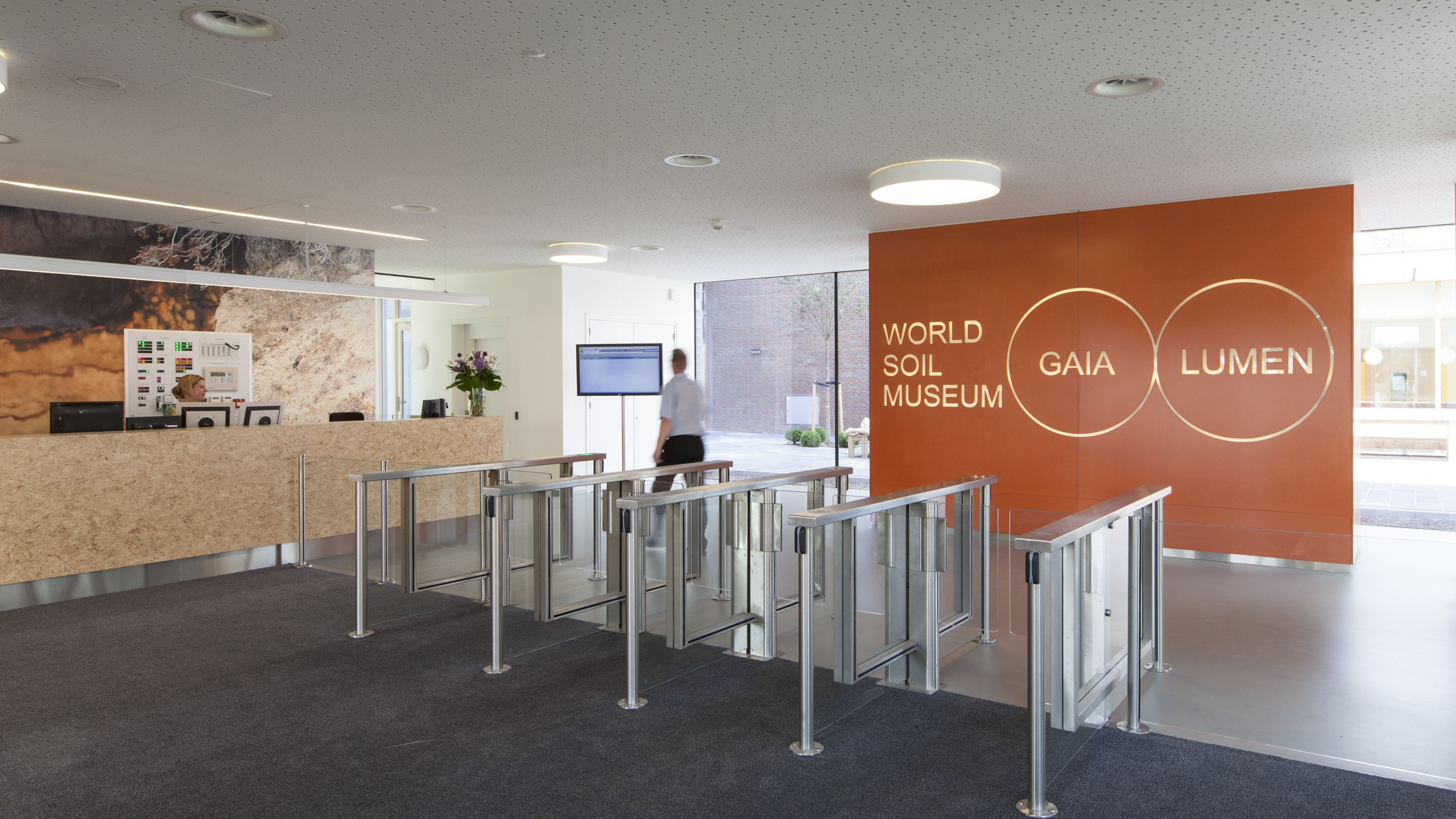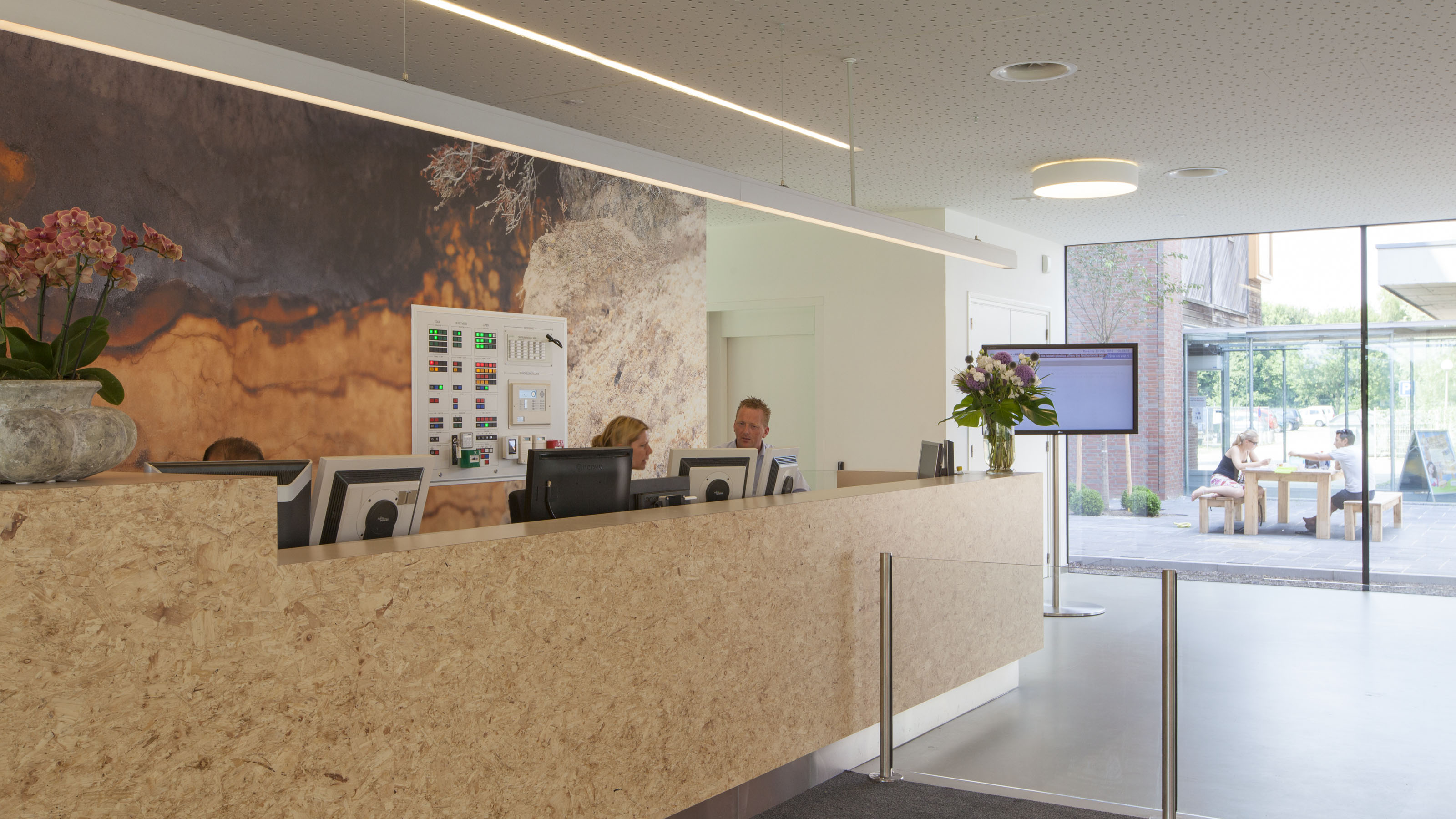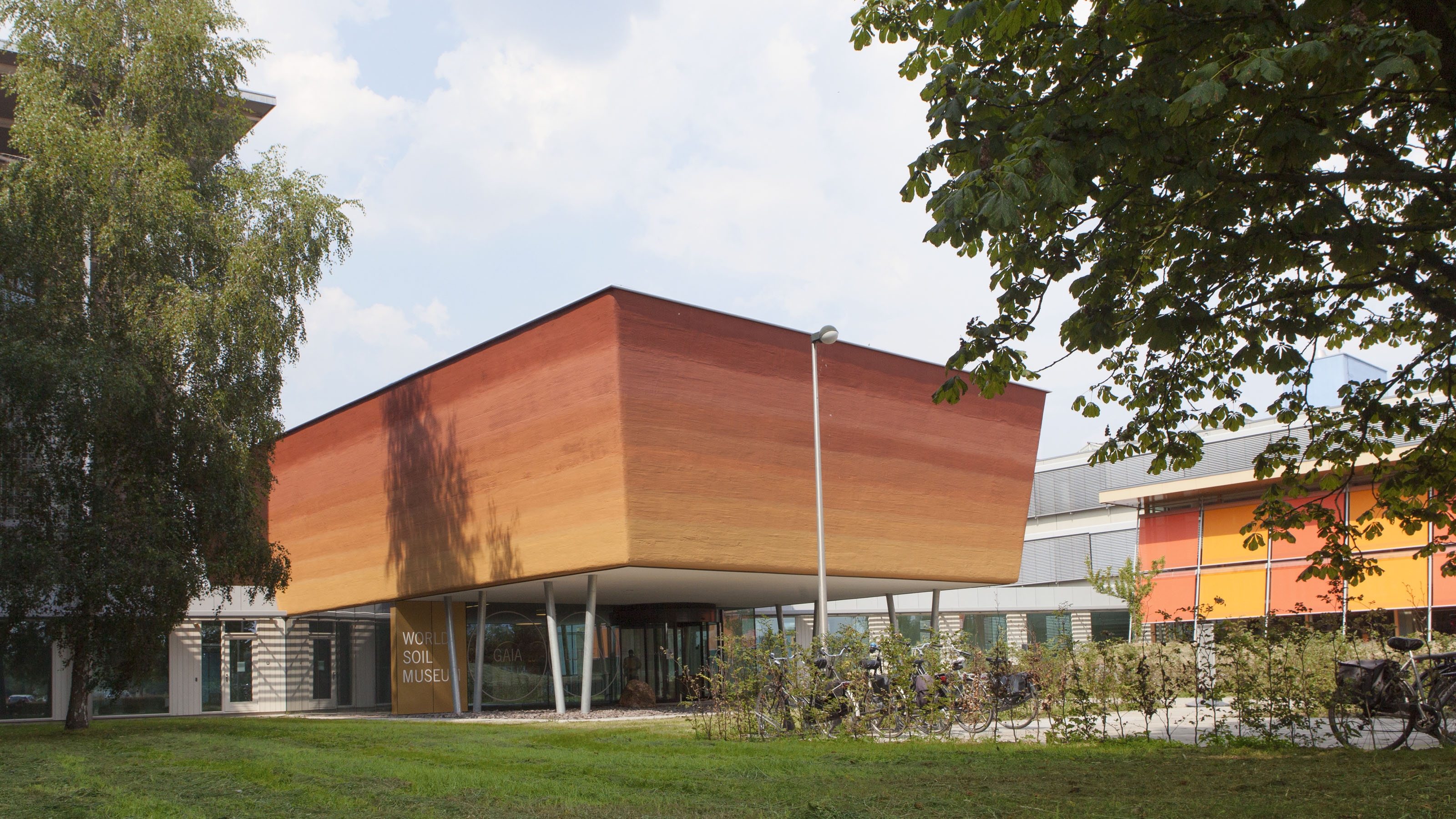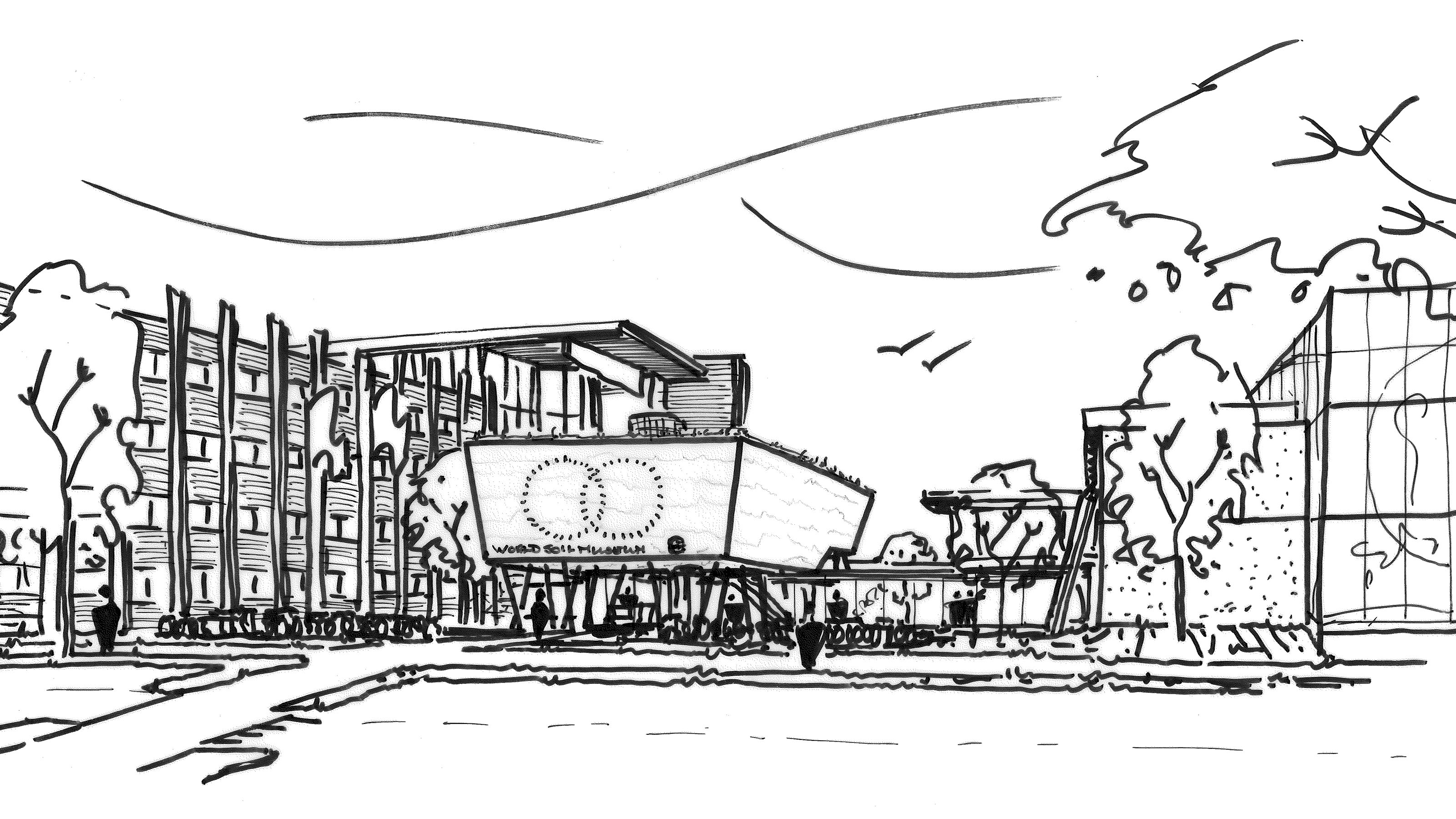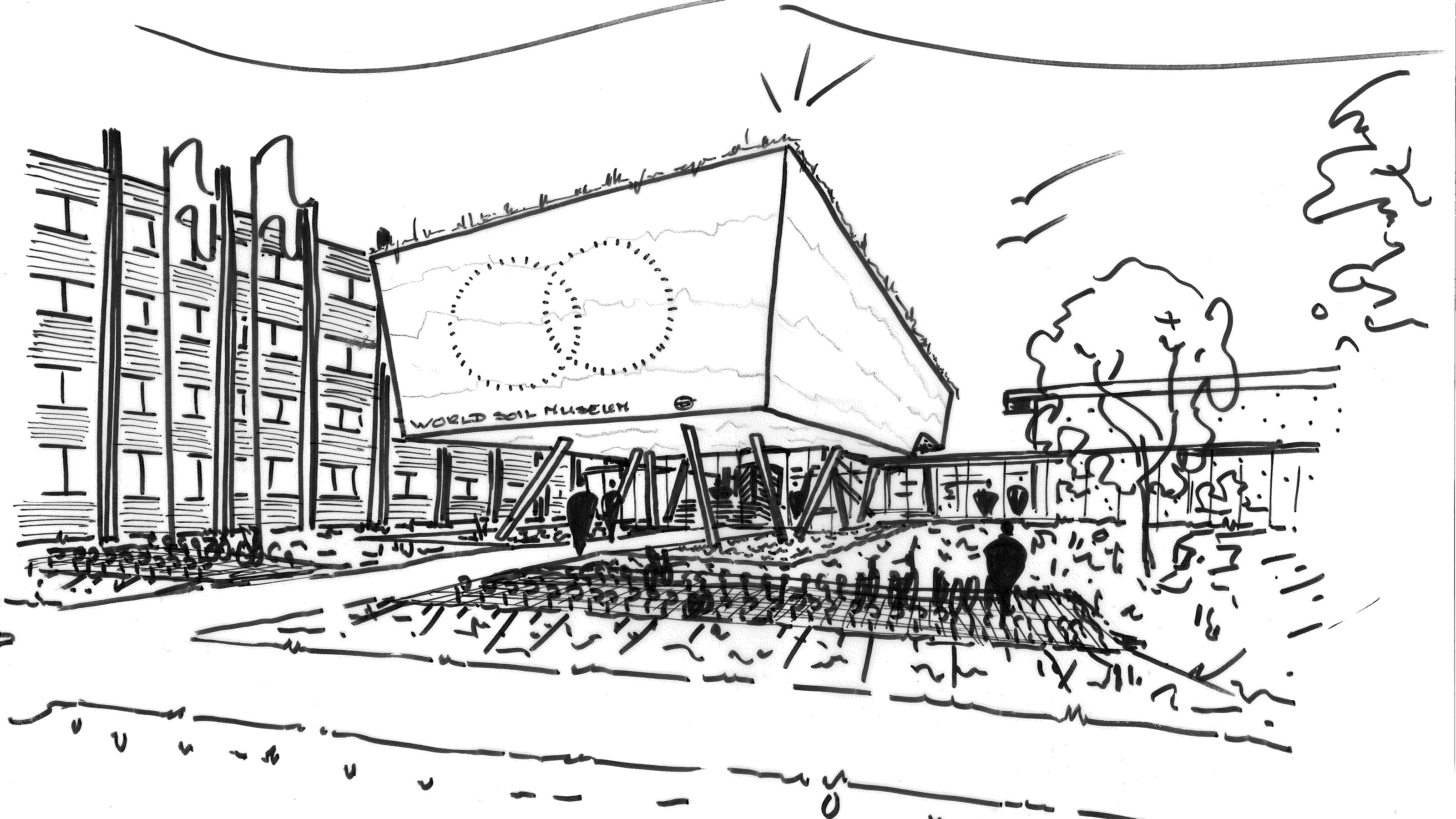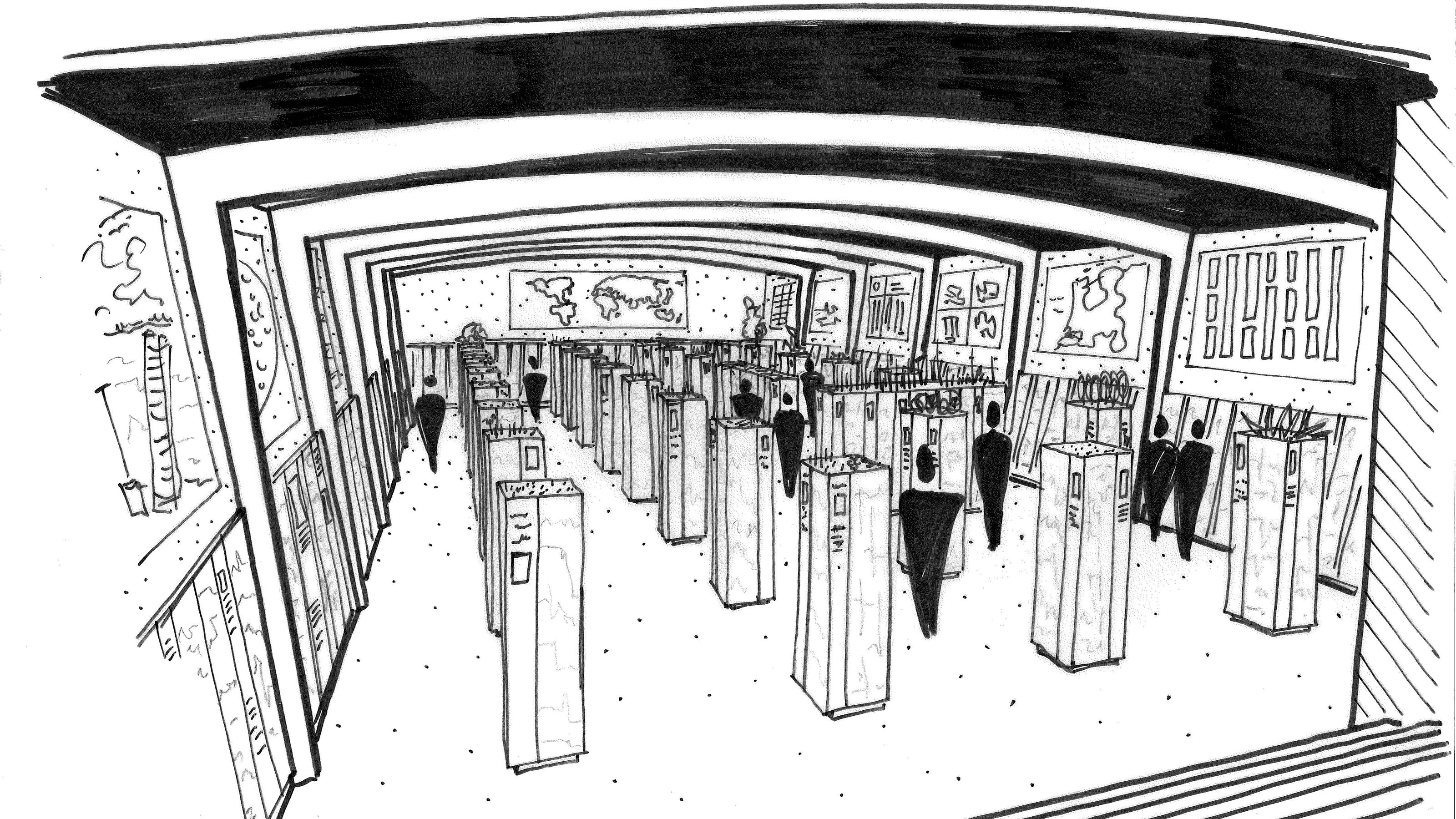An earthy ambiance which reflects a unique exhibition of soil types
The World Soil Museum houses a permanent exhibition of unique soil samples. The rough earth exterior of the museum looks like sod cut from the ground, as a metaphor for what can be observed inside.
Contracted by Wageningen University and Research centre (WUR), EGM architecten designed the World Soil Museum to be built on campus grounds. The museum is part of the International Soil Reference and Information Centre (ISRIC), a partner of Wageningen University. ISRIC is a global soil information centre that collects, studies and analyses information about soils all over the world, in order to gain knowledge about sustainable use of natural resources.
Unique collection
On 250 square meters, ISRIC displays a selection of its unique collection of soil profiles. Visitors are offered a sense of the role soils play in life and ecosystems on earth. Visitors also gain an impression of the enormous diversity of soils around the world. The collection and its related data are of such import that the museum has been designated the only UNESCO World Data Centre in the Netherlands. The exhibition hall in the museum can be reached via a staircase with an enormous enlargement of a colourful soil sample.
Earthy feel
The museum is located at the heart of the campus, between Gaia and Lumen buildings. EGM designed a shared entrance for these three buildings. The entrance area is transparent and open, with above it the museum as a denser mass, projecting a raw, earthy feel. Its closed character also refers to the fact that soil samples may not be exposed to daylight. Metaphorically, the museum can be considered a thick piece of sod cut straight from the earth.
